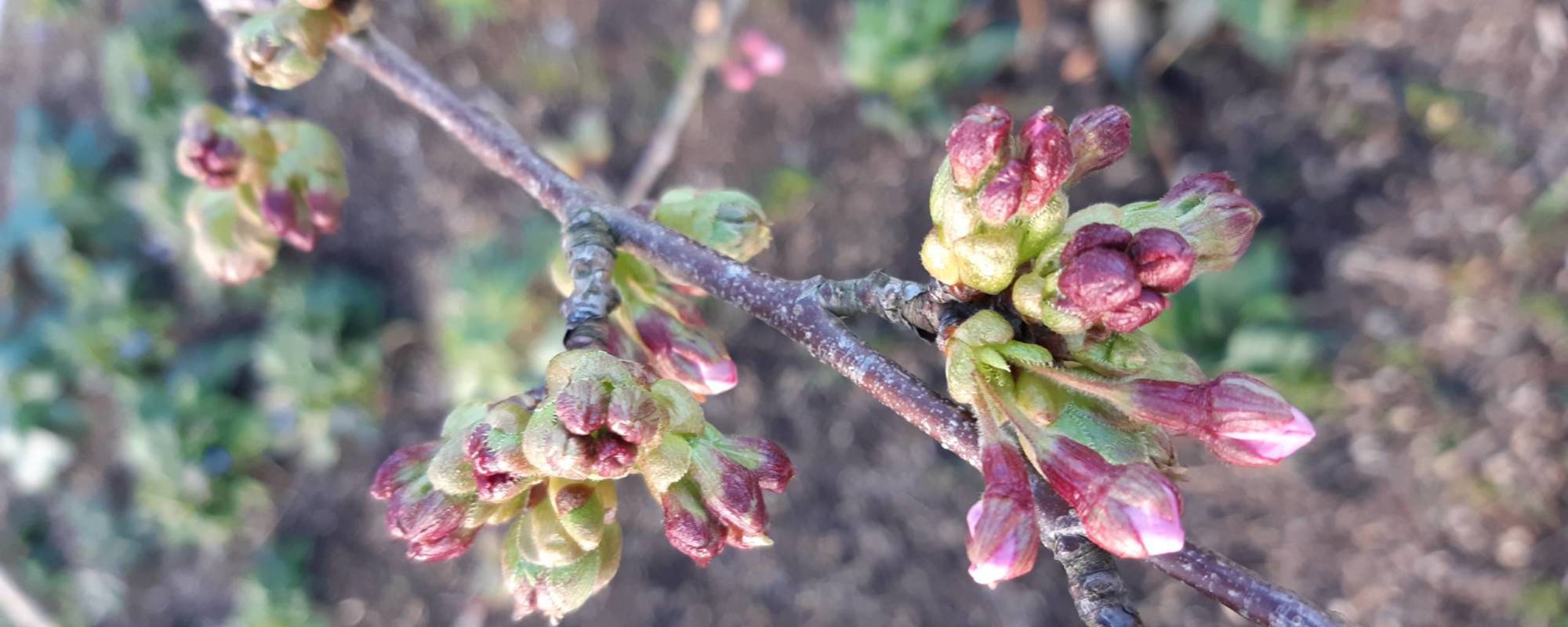
Diary of a Cultural Gardener - February 2020
05 Mar 2020
Our monthly diary to see what February has had in store for our Cultural Gardener, Katy Merrington.
From a distance the garden still looks wintery but when you observe the plants more closely there are so many magical signs of spring. Over 9000 spring bulbs are emerging steadily now and the amazing display of white daffodils, along with 23 varieties of brightly coloured Tulips will begin in just a few more weeks.
February has also seen the beginning of larger scale transformations, with the building contractors returning to complete Tom Stuart-Smith’s vision for the Woodland Edge part of the garden and also to work on the conversion of the old Gatehouse into a small café. The cafe will open this summer and will be a lovely spot at the heart of the garden to get coffees and cake and take in the sunshine that we are all longing for.
The first stage of the Woodland Edge construction has involved the pouring of a concrete wall, which will shelter the garden from the traffic of the Doncaster Road. The wall will sit within a display of woodland-style planting, with 16 trees going in on either side of the wall. There will be pin oaks which have amazing autumn colour and lots of smaller trees which are rich in spring blooms. There will also be an understory of smaller shrubs such as hydrangeas and osmanthus, along with a community of herbaceous perennials that Tom has selected for year-round interest.


February’s weather has been extremely stormy and it has been distressing to see people’s homes and businesses flooded. Fortunately for us, none of the recent storms have damaged the garden and so far the flower beds are draining well and the herbaceous perennials are starting to put out their new shoots.
With the soil being so wet and easily compacted, we have waited until the end of February to begin the task of cutting back all the dried stems and seed-heads from the deciduous herbaceous perennials. This clears the ground for next season’s display and we work systematically, cutting with secateurs close to the crown of the plant. Cutting back in this manner gives an opportunity to check how each plant is doing and to remove any weeds that are growing in the crowns. Whereas in some gardens they will cut back such planting in whole swathes, we are taking the approach of removing one variety at a time. This way the vegetation nibbles away more gradually, sustaining a visual presence and habitat for hibernating invertebrates until the new leaves emerge. We began by removing the persicaria, which collapses quickly at the first sign of frost and followed this by cutting back all geraniums. We then went on to the irises, which are early in producing their new leaves. We will continue to work through the perennials in this fashion and finish by cutting back the grasses last of all, when their new leaves emerge later in the spring.
We have had some wonderful drone photos taken this month by Layer Surveys and they really capture the graphic quality of the path and planting layout. Keep an eye on The Hepworth Wakefield’s social media and sign up to our garden newsletter to be the first to hear when the blossom on our cherry trees start to open and when we anticipate our very first Daffodils and Tulips are about to flower!




